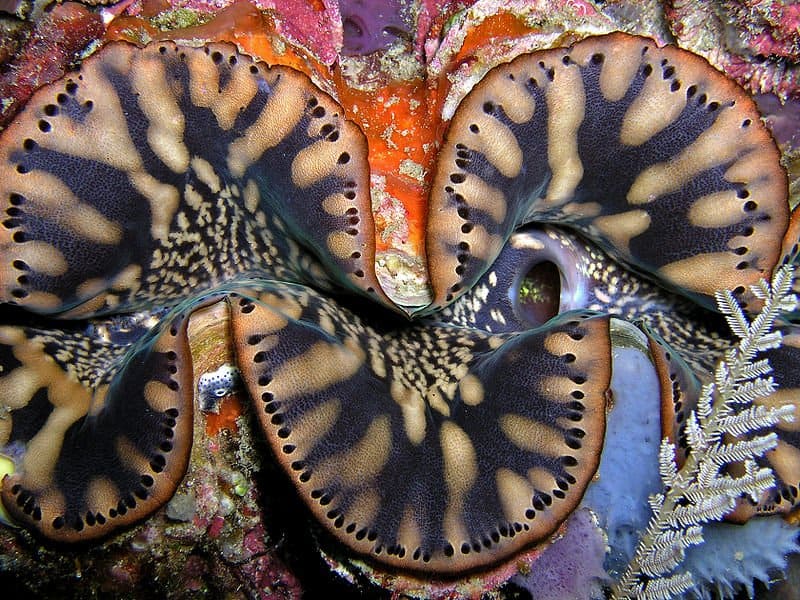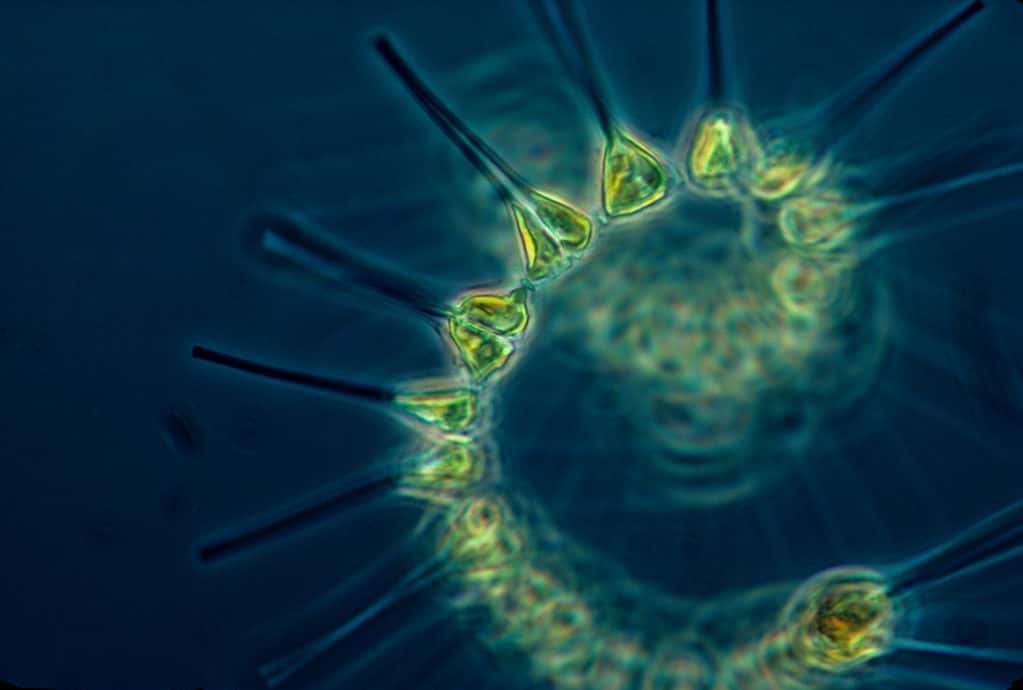Clams are in waters all across the globe, living in both freshwater, and saltwater habitats. A type of bivalve mollusk, there are more than 15,000 species across the world. North America has the greatest diversity of clams, and you may have spotted some buried in the sand at a beach or lake. Here you will learn about the largest clam ever found on earth, and the amazing things to learn about them.
Clams, like other shellfish, experience mass harvests for their tasty meats. You can find a clam small enough to fit in your hand, or one several times heavier than you, but all of them play an important role in the ecosystems they inhabit. Clams play an important role in improving water quality and have a symbiotic relationship with several animals. Let’s take a look at the largest clam ever found, and what is known about this giant.
The Largest Clam Ever Found
The largest clam discovery took place in 1817, in Indonesia Sumatra, on the northwestern coast. This clam was a giant clam (Tridacna gigas), which is the largest species of clam in the world. The largest clam ever found weighed 510 lbs with both its shells. (230 kgs), and had a size of 4.49 ft. (137 cm). If alive, it would have weighed around 550 lbs. (250 kgs). Today you can find this large clam in the Ulster Museum in Northern Ireland.
Several giant clams are across the world’s oceans, like the one found off the shores of Ishigaki Japan. This clam was found in 1956 and had a shell length of 3.9 ft. (115 cm), and a weight of 734 lbs. As time goes on finding these giant behemoths will become extremely rare due to their dwindling population.

Giant clams are the largest living
mollusks
and inhabit shallow reefs in the South Pacific, and the Indian Ocean.
The Largest Clam in The World- The Giant Clam (Tridacna gigas)
Giant clams are the largest living mollusks and inhabit shallow reefs in the South Pacific, and the Indian Ocean. On average these clams weigh around 440 lbs. (200 kgs.), and have a length of around 47 in. (120 cm). These large clams are able to live for more than 100 years. They have thick shells, and their soft bodies make up about 10% of their body weight.
Like other clams, this giant is able to produce pearls, and they are responsible for creating the largest, and most expensive pearls in the world. The pearls from this clam weigh up to 75 lbs and reach a value of 100 million dollars.
Diet of the Giant Clam
Giant clams are filter feeders that eat plankton and algae. This species has multicolors due to the various symbiotic algae that live in their tissue, and they also feed on the sugars and protein their algae create. By sucking in nearby plankton through their large central opening, this clam feeds and provides a safe area for different algae to grow.

Giant clams are filter feeders that
eat
plankton.
©Porco_Rosso/Shutterstock.com
How Does The Giant Clam Reproduce
Giant clams are hermaphroditic, which means they possess both male and female reproductive organs. They are not able to breed by themselves and mate with other nearby clams. Giant clams are able to produce more than 500 million eggs when fully grown. They swell their mantles when there is a release of eggs nearby and reproduce through broadcast spawning.
After getting fertilized eggs to float in the sea until becoming larvae. Clams fall to the seafloor at around 1 week of age, and they feed entirely on plankton. Research suggests this clam has a growth rate of around 4.7 in. (12cm.) a year.
Are Giant Clams Dangerous?
Historically this giant shellfish is known as the “killer clam.” Divers circulate myths of giant shellfish clamping on someone and drowning them. While the giant clam is not man-eating or aggressive, this myth is so common, instructions are in military diving manuals detailing how to escape the grip of one.
The giant clams’ abductor muscles are too slow to capture a human, and there have been no documented deaths from these giants. Humans are more of a threat to the giant clam than they are to us.

Giant clams are listed as a
vulnerable species
and are affected by habitat destruction, overharvesting, and the changing of the climate.
©Andrea Izzotti/Shutterstock.com
Why are Giant Clams Threatened?
Giant clams are listed as a vulnerable species and are affected by habitat destruction, overharvesting, and the changing of the climate. Documented as early back as 1521, today the giant clam is considered the most endangered clam in the world. Finding these large giants may become extremely difficult if steps are not taken to preserve them.
Up Next:
- Oyster vs Clam: 7 Maine Differences Explained
- What Do Clams Eat? The 5 Foods They Consume
- Clams vs Mussels: 6 Main Differences Explained
- Meet Louis: The 132-Year-Old Lobster That Lived in A Clam Bar Before His Miraculous Escape
The photo featured at the top of this post is © Nhobgood / Creative Commons / Original
FAQs (Frequently Asked Questions)
What was the size of the largest clam ever found?
The largest clam discovery took place in 1817, in Indonesia Sumatra, on the northwestern coast. This clam was a giant clam (Tridacna gigas), which is the largest species of clam in the world. The largest clam ever found weighed 510 lbs with both its shells. (230 kgs), and had a size of 4.49 ft. (137 cm). If alive, it would have weighed around 550 lbs. (250 kgs). Today you can find this large clam in the Ulster Museum in Northern Ireland.
Why are giant clams vulnerable?
Giant clams are listed as a vulnerable species and are affected by habitat destruction, overharvesting, and the changing of the climate. Documented as early back as 1521, today the giant clam is considered the most endangered clam in the world.
Thank you for reading! Have some feedback for us? Contact the AZ Animals editorial team.






